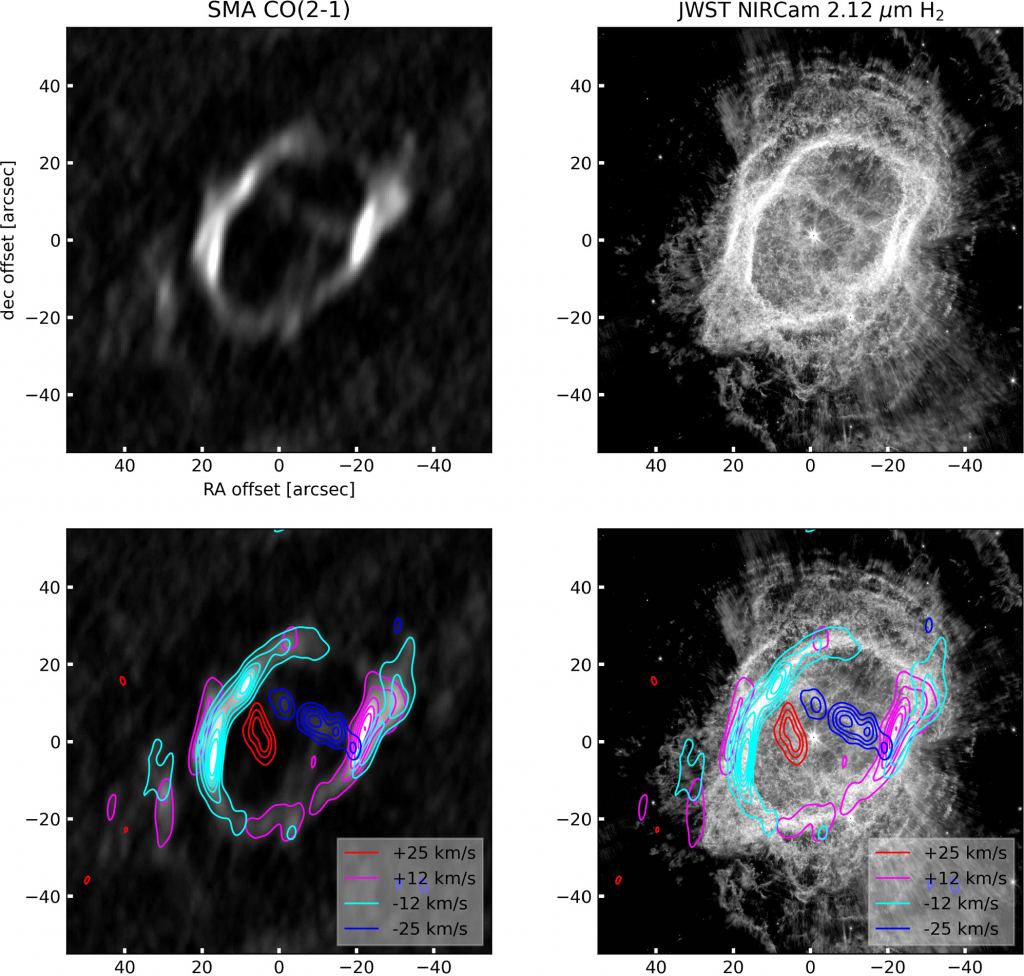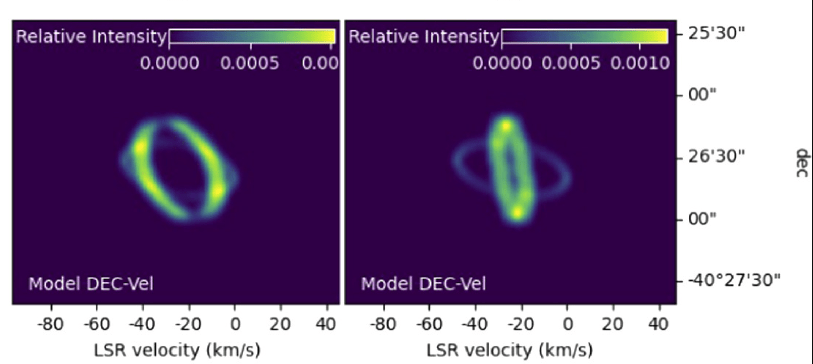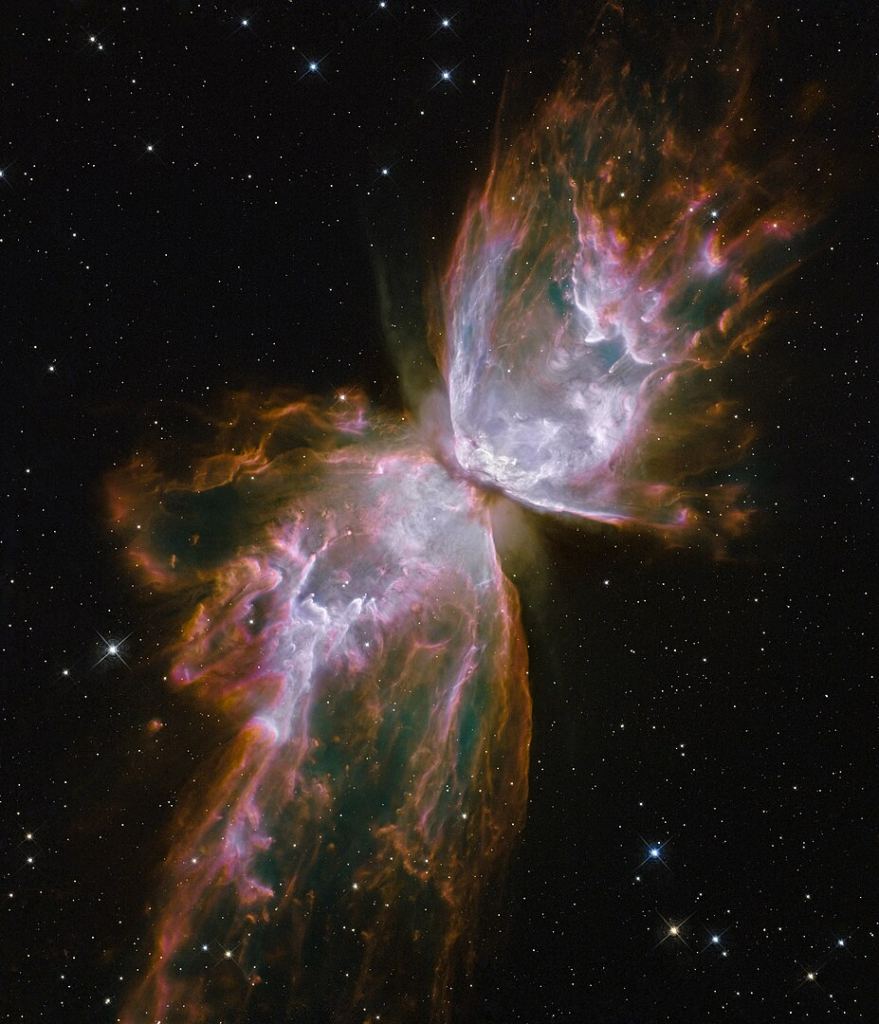Planetary nebula are some of nature's most stunning visual displays. The name is confusing since they're the remains of stars, not planets. But that doesn't detract from their status as objects of captivating beauty and intense scientific study.
Like all planetary nebula, the Southern Ring Nebula is the remnant of a star like our Sun. As these stars age, they will eventually become red giants, expanding and shedding layers of gas out into space. Eventually, the red giant becomes a white dwarf, a stellar remnant bereft of fusion that emanates whatever residual thermal energy it has without ever generating anymore. The white dwarf lights up the shells of gas expelled earlier, and we get to enjoy the show.
When the long-awaited JWST started delivering images, the Southern Ring Nebula (NGC 3132) was one of its first targets. It was one of five objects that made up the telescope's first science results. The JWST's images revealed something surprising about NGC 3132: it has two stars. The white dwarf is in the center of NGC 3132 and its companion is between 40 to 60 AU away, about the same distance as Pluto is from the Sun.
Researchers wanted to understand more about the Southern Ring Nebula's structure. The JWST works in the infrared and can image warm hydrogen in the nebula. But to get a more complete image of the nebula, a team of researchers from the Rochester Institute of Technology (RIT), Harvard-Smithsonian CfA, NRAO, Green Bank Observatory, NASA/JPL, and Macquarie University decided to dig deeper. They turned to the Submillimeter Array (SMA). The SMA can sense the cooler CO (carbon monoxide) in the nebula beyond the JWST's reach. It sensed CO's presence and measured its velocity and the velocities of other molecules.
The research is published in The Astrophysical Journal titled " The Molecular Exoskeleton of the Ring-like Planetary Nebula NGC 3132." Professor Joel Kastner from the RIT School of Physics and Astronomy is the lead author.
The new observations showed that most of the nebula's hydrogen gas is in a large expanding ring and that a second expanding ring lies almost perpendicular to the first.
"JWST showed us the molecules of hydrogen and how they stack up in the sky, while the Submillimeter Array shows us the carbon monoxide that is colder that you can't see in the JWST image," explained Kastner.
"The extra velocity dimension from the array's radio wavelength observations then effectively allows us to see the nebula in 3-D. When we started to turn the whole nebula around in 3-D, we immediately saw it really was a ring, and then we were amazed to see there was another ring," Kastner said.
"Surprisingly, the data further reveal that the nebula also appears to harbor a second, dust-rich molecular ring (Ring 2)—detected in (dust) absorption, in low-excitation emission lines, in H2, and (now) in 12CO(2–1)—that appears to lie nearly perpendicular to Ring 1," the authors explain in their published research.
The rings are offset from one another, which explains why the 3D view made the second one more visible. The team matched their observations to a geometric model that showed inclinations of 15° for Ring 1 and 78° for Ring 2.
Why does the Southern Ring Nebula have two offset rings?
The authors say we have a pole-on view of a bipolar nebula shaped by the presence of a second star. There are many bipolar nebulae, including well-known ones like the Butterfly Nebula.
However, the presence of a second star has complicated NGC 3132's shape. "We suggest that this apparent two-ring structure may be the remnant of an ellipsoidal molecular envelope of AGB ejecta that has been mostly dispersed by a series of rapid-fire but misaligned collimated outflows or jets," the authors explain in their research. "Such a scenario would be consistent with the hypothesis that the mass-losing AGB progenitor of NGC 3132 was a member of an interacting triple star system."
It would be consistent, but the authors say there's no way to conclude that a third star was involved with current research. "Detailed simulations of the dynamical effects of such multiple-star toppling jets systems on AGB molecular envelopes are required to test this speculative scenario for the shaping of the molecular exoskeleton of NGC 3132," the authors explain.
The presence of all that molecular gas in the nebula surprised scientists. The intense UV from the white dwarf should break up the carbon monoxide and the molecular hydrogen. But it hasn't.
"Where does the carbon and the oxygen and the nitrogen in the universe come from?" said Kastner. "We're seeing it generated in the sun-like stars that are dying, like the star that's just died and created the Southern Ring. A lot of that molecular gas could wind up in planetary atmospheres and atmospheres can enable life."
 Universe Today
Universe Today




